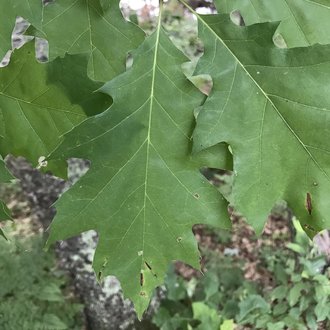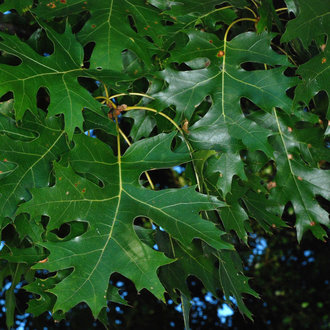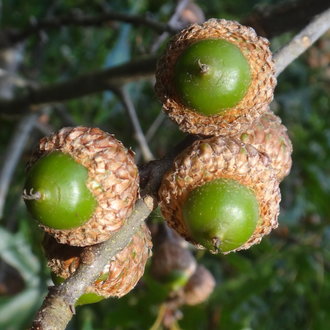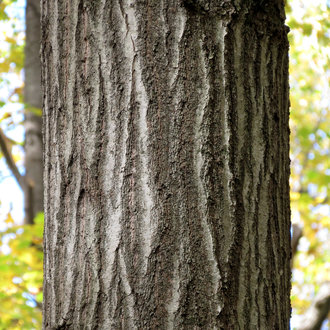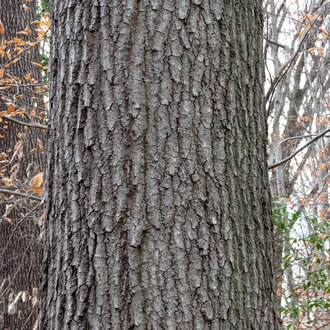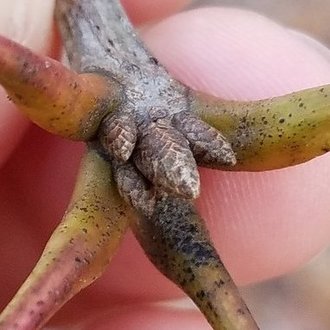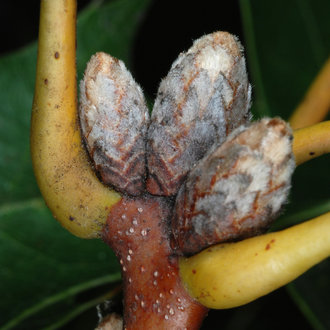Northern Red Oak vs Scarlet Oak
These species of the red oak group are sometimes confused, but are usually easy to tell apart. They overlap more in habitat than some red oaks, but northern red oak prefers richer sites and is more shade-tolerant, whereas scarlet oak can be found on drier sites with thin or poor soils.
Northern Red Oak (Quercus rubra) | Scarlet Oak (Quercus coccinea) |
A large tree, one of the dominant components of the forests of eastern North America, native to a wide range of the northeastern U.S. and Canada, extending well into the south. | A large, fast-growing, short-lived red oak of dry upland sites, named for the dark red color of its fall foliage. |
Leaves have 7-11 lobes. Often broad with shallow sinuses. Often glaucous (pale, slightly bluish) Photo © Aaron Boers, CC BY 4.0. | Leaves have 5-9 lobes. Usually deeply cut. Not glaucous. Photo © Doug Goldman, CC BY 4.0. |
Larger acorns, with the cap covering much less of the acorn. | Smaller acorns, with cap covering about half the acorn. Photo © Chris Kratzer, CC BY-SA 4.0. |
Bark of mature trees usually still having long, unbroken ridges with smooth pale gray on outermost layer, alternating with rougher, wide valleys. Photo © Katja Schulz, CC BY 4.0. | Bark of mature trees more scaly. Vertical ridges more broken, interspersed with narrower, deeper cuts between ridges. Photo © Katja Schulz, CC BY 4.0. |
Buds hairless or with a tuft of hairs only at the tip. Less visibly angular. Photo © Leila Dasher, CC BY 4.0. | Buds pubescent at the tip and hairless at the base, but averaging much more pubescent overall. Visibly 5-angled in cross-section. Photo © Doug Goldman, CC BY 4.0. |
References & External Resources
These short lists show only links helpful for ID. For a complete list of references and resources also covering other aspects of ecology, visit the links section of the full article on each plant, which is the first entry here.



